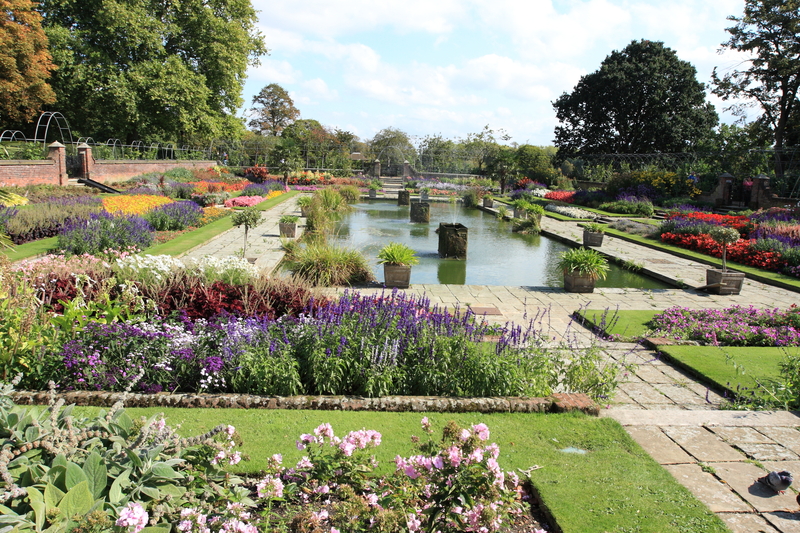Say Goodbye to Weeds: 3 Tips You Need to Know
Posted on 27/05/2025
Say Goodbye to Weeds: 3 Tips You Need to Know
Are you tired of pulling unwanted plants from your garden again and again? Weeds can quickly take over lawns, flower beds, and vegetable patches, stealing nutrients, water, and sunlight from your desired plants. But don't worry -- achieving a weed-free garden is possible! In this comprehensive guide, we'll reveal three essential tips to help you say goodbye to weeds for good. Whether you're a beginner gardener or a seasoned green thumb, these techniques will empower you to tackle and prevent pesky weeds, ensuring your garden thrives.
Why Weed Control Matters for a Healthy Garden
Weed management is far more than just an aesthetic concern. Uncontrolled weeds compete with your vegetables, perennials, and shrubs for vital resources such as sunlight, nutrients, and water. As a result, your garden plants may suffer from stunted growth, reduced yields, and even disease due to increased humidity and lack of airflow caused by dense weed growth. That's why using the right weed prevention strategies is crucial for any gardener serious about their plants' health.
- Weeds weaken your garden's ecosystem by outcompeting your plants.
- Many weeds attract pests and diseases that can harm your desirable plants.
- Some weeds release chemicals that inhibit the growth of other plants (allelopathy).
Ready to learn the secrets to a weed-free garden? Let's dive into the top three weed prevention tips you need to know!

Tip 1: Prioritize Prevention - Stop Weeds Before They Start
The most effective weed control strategy is to prevent weed seeds from germinating in the first place. It's much easier to keep weeds at bay than to eliminate them once they've established a foothold. Here's how you can outsmart weeds before they begin to grow:
Mulching: Nature's Carpet Against Weeds
Mulch is your garden's secret weapon. By adding a thick layer of organic or inorganic mulch to your soil, you create a physical barrier that blocks sunlight, suffocating weed seeds below. This not only prevents weed growth but also improves soil moisture retention and regulates temperature.
- Organic mulches (like wood chips, bark, straw, leaves, and grass clippings) break down and enrich the soil.
- Inorganic mulches (such as landscape fabric or black plastic) last longer but don't amend soil quality.
Pro tip: Apply mulch at least 2-4 inches deep and replenish it each season to maintain effective coverage. Keep mulch away from the stems of plants to avoid rot.
Use Weed Barriers and Landscape Fabrics
Installing landscape fabric or black plastic sheeting under beds can stop even the most persistent weeds from sprouting up. These physical weed barriers are especially helpful in vegetable gardens and under decorative gravel or rocks. Secure them with stakes, then cover with mulch to prevent degradation from sunlight.
- Pick high-quality, breathable fabric to let water and air through while blocking weed growth.
- Cut holes only for the plants you intend to grow to minimize exposed soil.
Keep Your Soil Healthy and Dense
Dense plantings and healthy soil discourage weeds. Fill open spaces with cover crops, groundcovers, or closely spaced flowers and veggies. The less bare earth there is, the fewer opportunities for weed seeds to find a home.
Tip 2: Remove Weeds Effectively & Promptly
Even with the best prevention methods, some weeds will inevitably find their way into your garden. Rich, healthy soil attracts all kinds of plants -- not just the ones you want! The key is to remove weeds as soon as you spot them and do it properly to prevent regrowth.
Pull Weeds Early and Often
The sooner you catch and pull a weed, the better. Weeds are easiest to remove when they're young and haven't established deep root systems. Hand weeding is effective for small areas, but be sure to remove the entire root, especially for taprooted weeds like dandelions.
- Water the soil first to loosen roots and make pulling easier.
- Use a weeding tool or garden fork for stubborn or deep-rooted weeds.
- Dispose of seed heads and roots away from the compost to prevent spreading.
Timing Matters: Weed After Rain
Moist soil makes weeding a breeze! After rain or watering, soils are softer, and weeds slip out easily without breaking off the roots. Conversely, avoid weeding when conditions are dry or the weeds have set seeds, as this could inadvertently spread those seeds around your garden.
Stay Consistent with a Weed Management Routine
Set aside time weekly or biweekly for a quick weed check. Routine maintenance ensures that weeds don't get out of control. It's much less work to tackle a few small weeds regularly than a weedy jungle at the end of the season!
Tip 3: Use Smart, Safe Weed Control Alternatives
Sometimes, you need a little extra help -- especially with persistent, invasive weeds or large areas to clear. While chemical herbicides are an option, non-toxic and eco-friendly approaches are often just as effective without the environmental risks. Here's what you need to know for controlling weeds safely and sustainably:
Boiling Water and Natural Weed Killers
A kettle of boiling water instantly kills emerging weeds on driveways, cracks, and paved areas. For garden beds, use with care to avoid harming your plants. Other homemade weed killers include vinegar, salt, and soap mixtures. These natural solutions can burn leaves but may need repeat applications for stubborn weeds.
- Apply carefully to avoid contact with desirable plants.
- Some homemade sprays can affect soil health if overused -- use sparingly.
Solarization: Using the Sun's Heat
Soil solarization is a highly effective, chemical-free method for clearing large areas of weeds and their seeds. During the hottest weeks of summer, cover moist soil with clear plastic sheeting, anchoring the edges tightly. The sun's rays will heat the soil to temperatures that kill weed seeds, pathogens, and even some pests.
- Leave the plastic in place for 4-6 weeks during peak sun.
- Solarization works best before establishing new garden beds or lawns.
Flame Weeding Tools
Flame weeders are propane-fueled torches that sear the tops of weeds, perfect for sidewalks and garden paths. This process ruptures plant cells and causes weeds to wilt and die. Use flame weeders with extreme caution to prevent fire hazards, especially in dry or windy conditions.
Herbicides: What to Know
If you choose to use herbicides, opt for targeted applications on tough perennial weeds, and always follow label directions. Seek out products labeled safe for pets, pollinators, and the environment, and avoid using them near edible crops if possible. Whenever possible, prioritize manual and mechanical removal before reaching for chemicals.
Extra Strategies for a Weed-Free Garden
Ready to banish weeds for good? Layer these additional best practices on top of the tips above for an even healthier, more beautiful landscape:
- Encourage robust, healthy plants. A thick canopy shades the soil, making it tough for weeds to sprout.
- Rotate crops and planting areas. Rotating planting locations each year disrupts weed life cycles and prevents certain soil-borne weeds from taking hold.
- Edge your garden beds. Install physical edging like bricks, steel, or plastic to keep creeping weeds at bay.
- Inspect new soil and compost. Only bring in weed-free soil, compost, and mulch. Many weeds arrive in contaminated amendments.
- Deadhead weeds quickly. Never allow weeds to flower and set seed.
Common Weeds and How to Tackle Them
Knowing your enemy is half the battle in any war -- including the fight against weeds. Here are three common garden weeds and how to defeat them:
Dandelions (Taraxacum officinale)
With deep taproots and prolific seeds, dandelions can be tough to eradicate. Use a weeding tool to extract the entire root. Mulch heavily, and stay vigilant in early spring when they first appear.
Crabgrass (Digitaria spp.)
Crabgrass loves bare, thin lawns. Keep your turf dense and healthy through proper fertilization and regular mowing. Remove young plants before they go to seed.
Bindweed (Convolvulus arvensis)
This aggressive vine spreads via rhizomes and seeds. Persistent hand pulling combined with thick mulching can gradually weaken bindweed over time. Avoid tilling, which can break rhizomes into new plants.

Conclusion: Say Goodbye to Weeds with These Effective Tips
Weed control doesn't have to be a losing battle. By prioritizing prevention, quickly and thoroughly removing weeds, and using safe control methods, you can maintain a beautiful, healthy garden all season long. Remember: consistency is key, and a little maintenance goes a long way toward keeping weeds out for good.
Say goodbye to stubborn weeds -- and hello to a flourishing, vibrant landscape!
FAQs: Your Weed-Free Garden Questions Answered
-
How many times a year should I mulch to prevent weeds?
Most gardeners apply mulch once per year in spring. Check your beds mid-season and add more as needed to maintain a 2-4 inch layer for maximum weed suppression. -
Should I use weed killers in my vegetable garden?
Use caution with chemical herbicides near edibles. Opt for hand weeding, mulching, and natural methods unless you have a severe infestation that cannot be managed otherwise. -
What's the quickest way to remove weeds without tools?
After it rains, simply pull small weeds by hand -- the moist soil will make this much easier, and you'll often get the whole root.
Armed with these top weed removal tips and preventative strategies, you're ready to reclaim your garden. For more expert gardening advice, be sure to explore our other resources!



